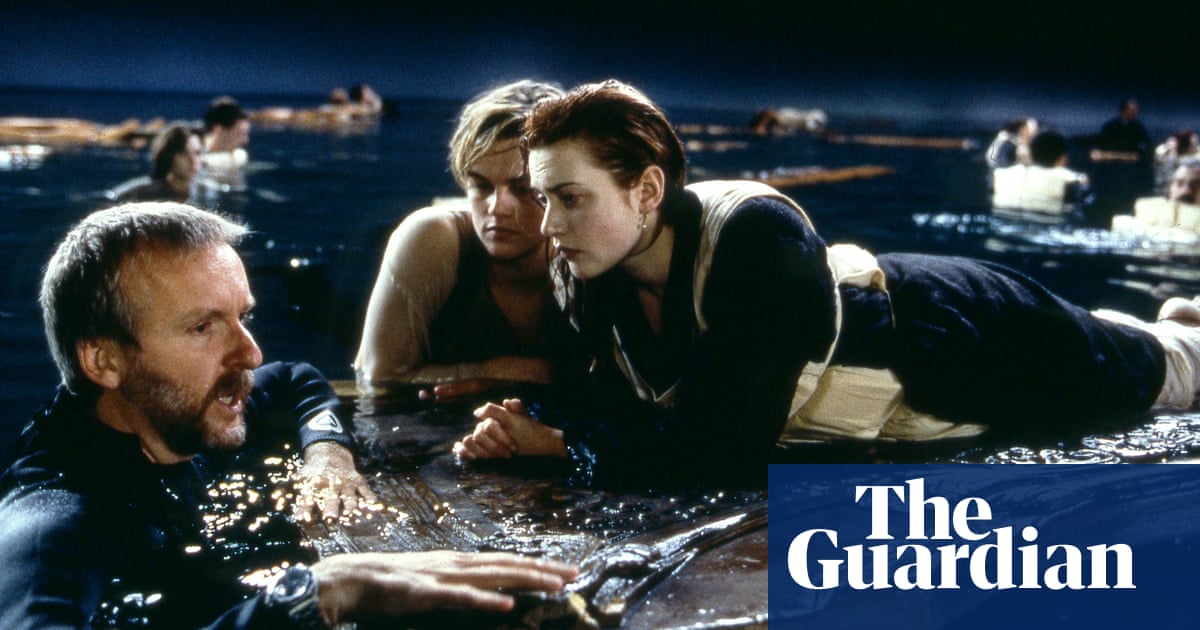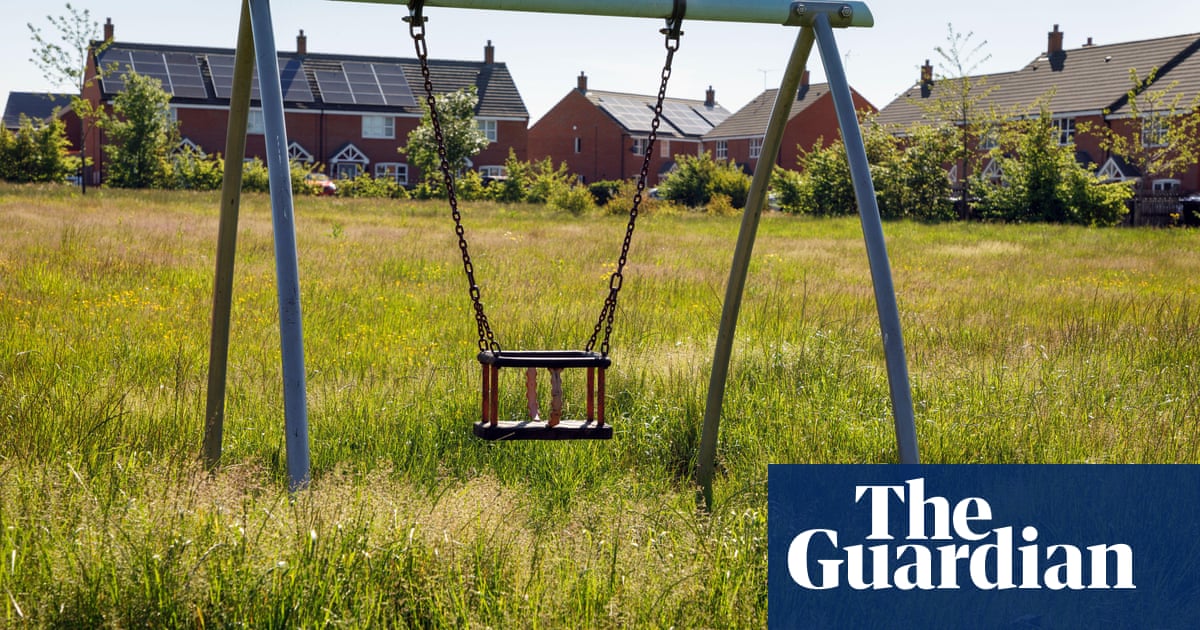
Four years ago, the Leeds-based Opera North and South Asian Arts came up with a bold plan to collaborate on an opera. Opening this week, Monteverdi’s 1607 Orfeo – one of the earliest known operas, a work that revolutionised the way people sang and conveyed emotion – has been radically reimagined in an innovative new production that respects and lets shine both musical traditions. Everyone was learning, everyone was out of their comfort zone, the company tell us, and everyone has found joy, friendship and expanded their musical horizons.
Laurence Cummings (co-music director, above, far left, in costume as a wedding guest): Opera North and South Asian Arts have partnered on smaller projects but this is their first opera. ON’s director of planning Christine Chibnall came to me four years ago and said: “Do you think this could work, combining the two worlds of baroque opera and Indian classical music?” I thought about it and said: “Well, I don’t know. But it sounds exciting.”
Nicholas Watts (Orpheus): Monteverdi’s opera is one of the first things I ever did professionally; to approach it from a completely different angle has been so exciting. I’ve been involved from the beginning, trying out what might or might not work in workshops. What was interesting how many musical similarities there were between the two traditions.
LC: I had a little bit of appreciation of South Asian music, but no knowledge at all. The key centre was one of the first things where we realised there was a similarity. Orfeo is largely in D and a lot of the Indian classical instruments are or can be easily tuned in D, and the Raags [the Indian melodic lines] can work with that. We did some workshops with Kaviraj Singh, who sings Caronte, and Nick, and there was a golden moment when their two voices just were bouncing off each other.
Jasdeep Singh Degun (co-music director/composer): I grew up in Leeds and studied sitar and classical Indian singing but was also part of the school choir, learned the piano and grew up watching Disney films with their lavish orchestral soundtracks. I’ve always had the two traditions simultaneously in my head, and as a contemporary composer I’ve had experience of collaborative work bringing two musical worlds together. And luckily I love counterpoint!
Anna Himali Howard (director): The decision about what parts would be South Asian music and what would be Monteverdi was dramaturgically driven. We were looking at what would make the story clearest. There were certain western voices that Laurence wanted to keep. For example, Plutone – we wanted that bass voice at that particular moment, so we decided he was to be a western singer. So Proserpina became an Indian singer who could duet with him.
LC: It was only once the Indian singers were cast that Jasdeep could work with them and write the music for them. But that’s another similarity. I always call early opera “looseleaf opera” because the score you end up with for the production is never the same as what you had on day one. Monteverdi, like Indian classical musicians, would have tried things, improvised, changed passages here and there, and he also tailored his vocal parts for individual performers.
JSD: We translated Monteverdi’s text into six different languages so that most of the singers are singing in their mother tongues. As well as Monteverdi’s Italian, you’ll hear Urdu, Hindi, Tamil, Malayalam, Punjabi and Bengali.
AHH: On the first day of rehearsals, everyone introduced themselves and their instrument and said what it was made of, what time period it was from, how you play it, and then gave a little demo. Everyone was enthralled by each other’s instruments, and afterward were all going up to each other and asking questions and trying things.
Kirpal Singh Panesar (esraj and tar-shehnai, above left): In terms of Indian instruments, the esraj is not all that old – only about 450 years. It was designed to sound like the human voice. There are four main strings and 16 sympathetic strings, and you bow the fretboard. I grew up in Birmingham but we went on holidays to the Punjab where I learnt to play it – because music makes you see the world in a better way.
LC: Monteverdi was very specific in the instruments he scored for. We’re missing the entire brass section bar one trumpet – we simply didn’t have room on the stage. Alongside eight players from the Opera North orchestra, there are five baroque specialists including the lirone and the theorbo players, and six Indian musicians, two of whom are from the south Indian (Carnatic) tradition, the other four who are from the northern Indian classical tradition.
JSD: But it’s not that the Indian instruments are replacing the missing instruments – the score is very melded. A lot of the musical decisions happened as we experimented with sounds, combinations and textures. We also wanted to give each instrument a moment where it can shine. None of us wanted this to be just Monteverdi with Indian instruments, there needed to be Indian classical repertoire as well that the Indian musicians could get their teeth into.
Leslie Travers (set and costume designer): For all its fantastical elements, the story is very human, and the idea of nature is central to its music and drama. As Anna and I talked, what became resonant was that, after the time that we’ve been through, our homes have become very central.
AHH: The opera seemed so clearly to be about a man unable to face the shock of grief, and it felt really personal and contemporary, considering the sort of journey that we had all been on in the past few years.
LT: This kind of back garden is the environment I and so many people in the company grew up in – it’s a very English patio in a northern town but I added the lusciousness and some of the gorgeous colours of India, and there’s a nod to Renaissance perspective. I loved the idea of putting these incredible instruments such as the sitar, harpsichord and tabla into a very domestic setting. In our production the musicians are all guests at Orpheus and Eurydice’s wedding party, their colourful costumes a celebration of the joy and new life of the beginning of the story. We placed them round the edge, in the flower beds, some on platforms with an ornamental feel, others on a ramshackle collection of kitchen chairs that I imagined having been borrowed from neighbours for the occasion.
AHH: I like the intimacy of the setting – it’s people gathering to celebrate and play music …
LC: … and it’s true to the spirit of the work’s origins. 17th-century operas were performed in small rooms in a palace – as was Indian classical music.
AHH: All the musicians at the beginning play wedding guests, but a few also play characters in the drama. As things start to get uncanny and otherworldly, musicians could suddenly be gods. I was excited by the classical Hellenic idea that the gods are among us in disguise.
AHH: Each opera singer has their own approach to acting but among the south Asian singers there are solo artists who have rarely acted and there’s one who has their own theatre company. And all of those styles are quite specific. I didn’t want to homogenise them all, I wanted the texture of seeing people’s different ways of storytelling.
Ashnaa Sasikaran (Eurydice, above): I was in my final year at university, studying physics and theoretical physics, but music has always been number one for me. I was very shy growing up – I didn’t really speak at all – so my parents sent me to a range of clubs to get me out of my shell. Singing was the one I connected with the most. I started with Carnatic – south Indian classical music – and during university I ventured into other genres, like R&B and funk. I had met Jasdeep several years earlier when I was part of the National South Asian Youth Orchestra, and he got in touch saying there was an audition for Opera North’s new production. I thought I might as well try.
We, the Indian classical musicians, are singing mostly Jasdeep’s compositions. My mother tongue is Tamil but Eurydice’s music is in the Hindustani tradition (from north India), a style I had no experience of, but luckily plenty of people here have been able to help my Hindi pronunciation. We’re also singing some of the chorus parts of the Monteverdi. I’ve loved getting to know this magical music. I’d never in a million years have thought I’d go to an opera or appreciate that kind of music, but 100% I want to see more opera now. A hundred per cent!
Nicholas Watts (Orpheus, above): It’s Orfeo but not as you would recognise it. In fact it’s something totally different. It uses part of Monteverdi’s opera but there’s a whole load of new music as well. We’ve tried to create a balance between two different artistic traditions, rather than what sometimes happens with these kinds of projects, were the different culture is a token thing on the periphery.
Eurydice and I actually sing together now, which doesn’t happen in the original. There are improvised moments that will of course be different for every performance. And yes, I do a bit myself, but nowhere near on the level that the Indian performers do. And there’s dancing too – a mixture of styles. Luckily for me I only have to do a gentle dance, as it’s not a part of my job that I relish. I have two left feet.
AS: I was worried at first – fusion projects often backfire. But this isn’t “fusion”, just mushing two things together as the word implies. The production lets both classical styles breathe and shine, and when there is space for them to come together it’s done in a really tasteful way.
JSD: In collaborative projects, I usually have to bend over backwards just to be visible in the room. I had told myself, I’m not going to take on a project where there isn’t parity ... We’ve gone past the east-meets-west ideas that saw collaborations between the likes of Ravi Shankar and Yehudi Menuhin. This is about melding, sharing and being respectful to both traditions in a way that highlights the best of both. For a start we’re all British-based, most of us are British-born and we have the same cultural references, the same jokes, the same homes.
LC: A lot of grand opera involves you sitting back and letting it wash over you, but we want audiences to be drawn in.
JSD: Indian classical music is a very meditative chamber-style music that happens in intimate spaces in front of small audiences. It’s a drawing in thing rather than an outward projection.
AHH: That was one of the main challenges for me, finding a medium between the two styles: one that is used to projecting out, and one that is used to pulling in.
JSD: Obviously the performance is what we’re aiming for, but for me the process has been just as important.
LC: That’s the flipside of being out of your comfort zone. Here you can’t fake it or try to seem authoritative, you’ve just got to wait and do it. It’s very liberating!
AS: My friends are asking, like HOW does it work? But I can’t explain - I tell them they have to come and watch it and experience it!
Orpheus is at Opera North Leeds from 14 to 22 October, then tours to Newcastle (5 Nov), Nottingham (12 Nov) and Salford (19 Nov). It will be available to watch for free on OperaVision from 31 October until 30 April 2023.












